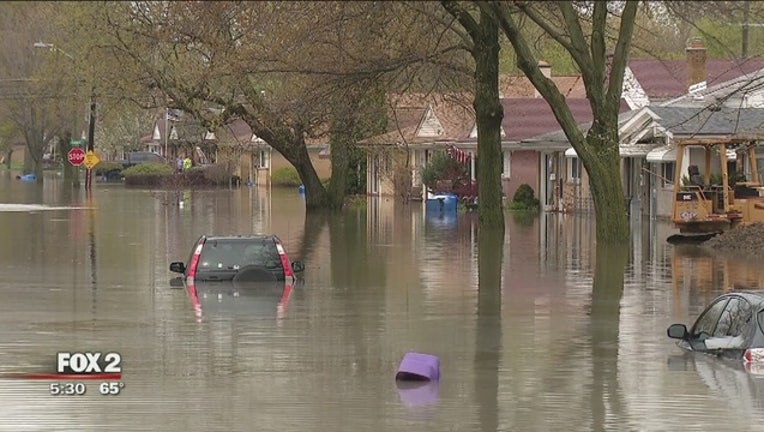Wetter than most: It's rained 23 out of 31 days in May

(FOX 2) - You had a hectic week of work, where you weren't able to get home in time to mow.
“That's okay,” you think. “I'll just cut the grass this weekend.”
But then it rained on Saturday and Sunday. Not a lot - but enough any attempt to mow would leave your lawn a soppy mess, complete with muddy-green stretch marks of flattened grass no shorter.
Looking at another busy week of work, your grass is now as high as your knees. Code Enforcement is breathing down your neck, with a warning of a pending fine if it's not cut soon. But how are you supposed to mow when there's so little time in the day when the grass isn't wet?
You're not crazy; the month of May has been a wet one.
With the likelihood of May 31 tacking onto that dry day total, there were only eight dry days this month in the Detroit area. That means it rained 23 out of 31 days in May. On average, we have 12 days of dry weather, compared to the 19 wet days in May.
“We're definitely on the higher end of normal for the number of wet days,” said Trent Frey at the National Weather Service.
Oddly enough, more rainy days hasn't translated to more total rain. Detroit is only slightly above average for rainfall in the month of May - about 3.61 inches fell this May. That's just barely above the 3.27 inches that fall on average. Compare that to May of 2018, when almost twice the amount of rain fell compared to the average, despite having 12 days of no rain.
Part of the reason for this difference is due to the storms that have moved of Detroit. There haven't been as many extreme storm events. In 2018, there were two days with more than 1.3 inches of rain that fell in a day during the month of May. This May, there's only been one day like that.
Instead, while 75 percent of the month has been rainy, it's been a steady drizzle dispersed over the month. So what's causing this string wet days?
“It's just the way the jet stream is set up,” Frey said. “The storm track has had more chances to see rain fall this year.”
Of the dry days accounted for, the weather service database did not account for "trace amounts" of rain that fell on those days.
There's no predictors that would indicate June could continue our wet streak. In fact, the first week of June is expected to be pretty dry. Normally the National Weather Service uses El Nino and La Nina events to get an idea of how much precipitation is expected to fall. Because both of those phenomenons aren't as extreme this year, “nothing points to above or below amounts of rain falling. There's an equal chance of both.”

